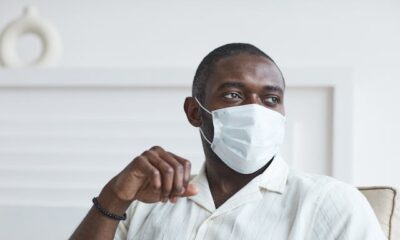Features
Janyl Benyl: Malaria, Yellow Fever…The Fight Against Vectors
 This year has seen a lot of concern on vector control initiated by the World Health organization. Apart from the World Malaria day which is celebrated on the 25th of April. The World Health Day which is celebrated on the 7th of April every year to mark the anniversary of the World Health Organization was tagged ‘small bite, big threat’ this year to channel the focus on vector borne diseases and the danger they pose. Vector borne diseases, as the name suggests include those diseases that are transmitted via vectors. Some common vectors include: mosquitoes, ticks, snails, black fly, etc
This year has seen a lot of concern on vector control initiated by the World Health organization. Apart from the World Malaria day which is celebrated on the 25th of April. The World Health Day which is celebrated on the 7th of April every year to mark the anniversary of the World Health Organization was tagged ‘small bite, big threat’ this year to channel the focus on vector borne diseases and the danger they pose. Vector borne diseases, as the name suggests include those diseases that are transmitted via vectors. Some common vectors include: mosquitoes, ticks, snails, black fly, etc
Interestingly, half of the world is still suffering from vector borne diseases. Mosquitoes for instance have been a huge plaque in Nigeria. Mosquitoes transmit so many diseases. They include:
Malaria
Transmitted specifically by the anopheles mosquito. Nigeria still records deaths due to malaria. Malaria is the 3rd leading cause of death for children under five years worldwide. Nigeria alongside 3 other African countries (Republic of Congo, Ethiopia and Uganda) account for 50% of the total deaths caused by malaria globally.
Yellow fever
Spread widely by the Aedes mosquitoes, this disease could lead to issues like liver damage, jaundice, dehydration due to vomiting and loss of appetite, amongst others.
Dengue fever
Also transmitted by the Aedes mosquitoes, this disease has symptoms which include: headache, pains, fever and more characteristically, an irritating skin rash that is similar to measles. It can lead to deadly conditions with presentations of hemorrhagic fever which results in low levels of platelets and consequently, dengue shock syndrome where there is an issue of low blood pressure.
Lymphatic filariasis
This is more commonly referred to as elephantitis. It is another disease transmitted by mosquitoes. Characteristically evident with edema, especially with the lower extremities imitating that of an elephant, this disease is one that does not give its victim room for comfort.
Unlike before when these diseases were highly dreaded due to their deadly potentials, these diseases do not have to kill if carefully controlled. Most of them can be cured or at least prevented. As simple as the prevention of malaria may sound to most people, it is still a public health concern. And this is due to the fact that most people are still un-informed and that leaves us with the task of spreading the word.
We must not relent until we have successfully equipped everyone on how to get rid of these vectors.
With a rapid surge in insecticide resistance, insecticide treated nets seem to be the most effective and realistic means of controlling mosquitoes these days. The estimated numbers of Insecticide treated nets delivered in 2013 was 136 million. This amount was close to the number of insecticide treated nets required annually to protect all populations at risk. However, the projected 3-year total of insecticide treated nets delivered in 2012–2014 (about 400 million) will still be below the minimum number needed to protect all persons at risk of malaria. This simply indicates that there will still be cases of malaria reported. The appropriate levels of insecticide treated nets deliveries need to be maintained each year to ensure the availability of these nets in every household for easy access to those people at risk of malaria. This will help to ensure effective primary prevention for malaria.
“A global health agenda that gives higher priority to vector control could save many lives and avert much suffering. Simple, cost-effective interventions like insecticide-treated bed nets and indoor spraying have already saved millions of lives,” says Dr Margaret Chan, WHO Director-General. “No one in the 21st century should die from the bite of a mosquito, a sandfly, a blackfly or a tick.”
The focus now has been turned on vector control as a preventive measure against vector borne diseases and related deaths. Start by sharing this article with a friend. Every little effort counts!
***References:
United States Embassy in Nigeria, Malaria fact sheet 2014
Roll back malaria.org
World Health Organization, Malaria fact sheet 2014.
Photo Credit: Dreamstime | Birgit Reitz-hofmann





















